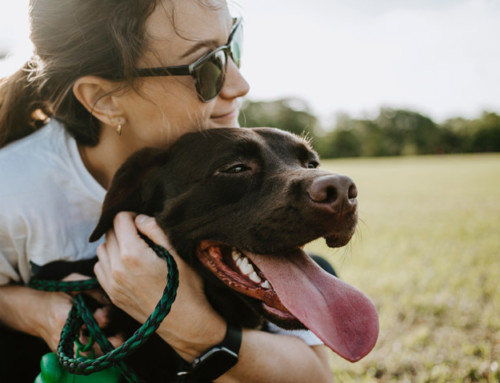No dog wants to end their days homeless and without anyone to love. Yet tragically, the dogs who wait the longest in animal shelters are often the ones with the least amount of time left. Senior dogs are commonly glanced over by prospective pet parents, with many not realising that senior dogs can make the best pets with the right care, and in the right circumstances.
Older dogs might be a little slower and grumpier than their younger counterparts, but there’s still a puppy in there somewhere. Even the greyest of dogs has plenty of loving play and joyful expressions to show when given a little affection. Don’t be too quick to dismiss them and know that senior dogs really will benefit from the foster care system.
Most older dogs are already house-trained, know basic commands, and are typically less destructive than puppies. If fostering a dog is your goal, why not consider an ageing pooch to be your new friend?
Older dogs don’t belong in a pound. They have often already endured the loss of their owner (a common reason why senior dogs become homeless) meaning they are already suffering. Give them a chance at a new friendship and they will be eternally grateful. Just be sure to wean them into your home gently and take care when socialising them.
Why senior dogs need extra care when being socialised
Socialising an adult dog can be very different to socialising a puppy. Puppies in their sensitive period (between 3 and 20 weeks) are generally accepting of new people, places and other dogs, so teaching them to feel comfortable is relatively easy. For most puppy owners, socialisation is simply a case of exposing your pooch to new things every day, feeding wonderful treats at the same time you do, and making each interaction a happy one. Continued exposure in this way eventually means your puppy is likely to retain happy impressions throughout life.
But when a dog has been put into the foster care system, some of those impressions may have been lost somewhat. Time in a shelter can make a dog nervous and unsettled and this should be acknowledged when introducing him back into home life. Besides, even the most socially-matured dogs do not typically enjoy playing with large groups of unfamiliar dogs and may snap at a boisterous pup that comes too close. This should not be considered bad behaviour – it is in fact quite common.
The goal when socialising an older dog should not be to set him off to run free with other dogs and have a whale of a time. It should be to teach the older dog to behave calmly in public and on walks and to sit quietly when instructed. Socialising an older dog is about teaching him to respond to his name while other dogs pass at a safe distance. It is not necessary to have the dog “say hi” to every dog he sees, nor should he have to acknowledge other dogs. When forced to interact on a tight leash for too long, the introduction can result in leash reactivity – often misidentified as abnormal behaviour.
If, however, your heart is set on spending time with other dogs, introduce your senior dog to one dog at a time and allow polite distance between dogs as they become accustomed to each other. Invite a friend to bring their gentle, easygoing dog on a walk with you and if they appear relaxed throughout the walk, allow them to sniff each other briefly. Keep leashes loose and interactions short. While you are out walking, consider walking the perimeter of your local dog park to allow the fostered dog to see other dogs interacting and having fun.
You may already have a dog at home that you are hoping will get along with the new dog. This is perfectly fine – many foster carers have other pets – provided your dog is well-socialised and fully vaccinated. This is for their own protection, as well as the protection of the fostered animal. You may need to provide copies of current vaccination/desexed certificates for all pets, and consider the impact a new animal in the home may have.
Again, introducing a fostered dog to your other pets should be done slowly. Consider introducing the dogs while on a walk, when they’ll have less pent-up energy and are generally more submissive. Even if you know your dog well, you may be surprised at how they react when introduced to a new pet within the home.
Keep both dogs leashed and once having said hello at a polite distance, allow them to sniff each other. If either dog appears to be tensing up, call the dogs apart using a pleasant, relaxed voice. Remember not to pull back on the leash or yell at the dog, because this will increase their excitement level and create a negative experience. This negativity will then be associated with other dogs. If both dogs still remain relaxed, consider letting go of leashes and allowing the leashes to drag. Keep this session short and repeat if you are still concerned before bringing the fostered pet home.
The bottom line is that socialisation of any kind only benefits dogs and owners if it is enjoyable. Try to relax yourself and your fostered dog should do the same.







Leave A Comment